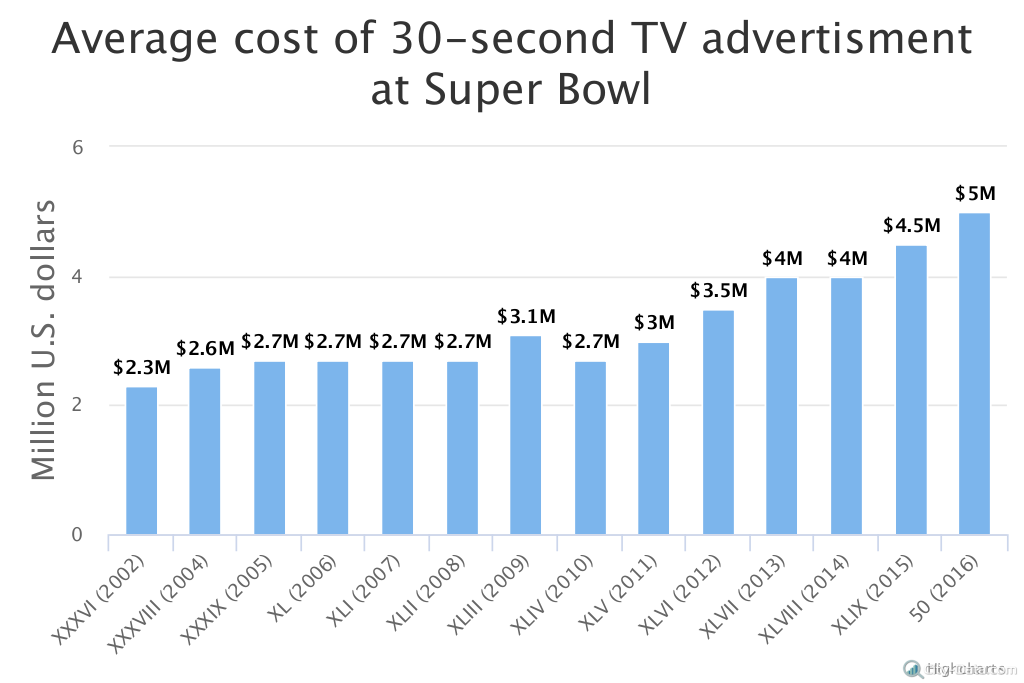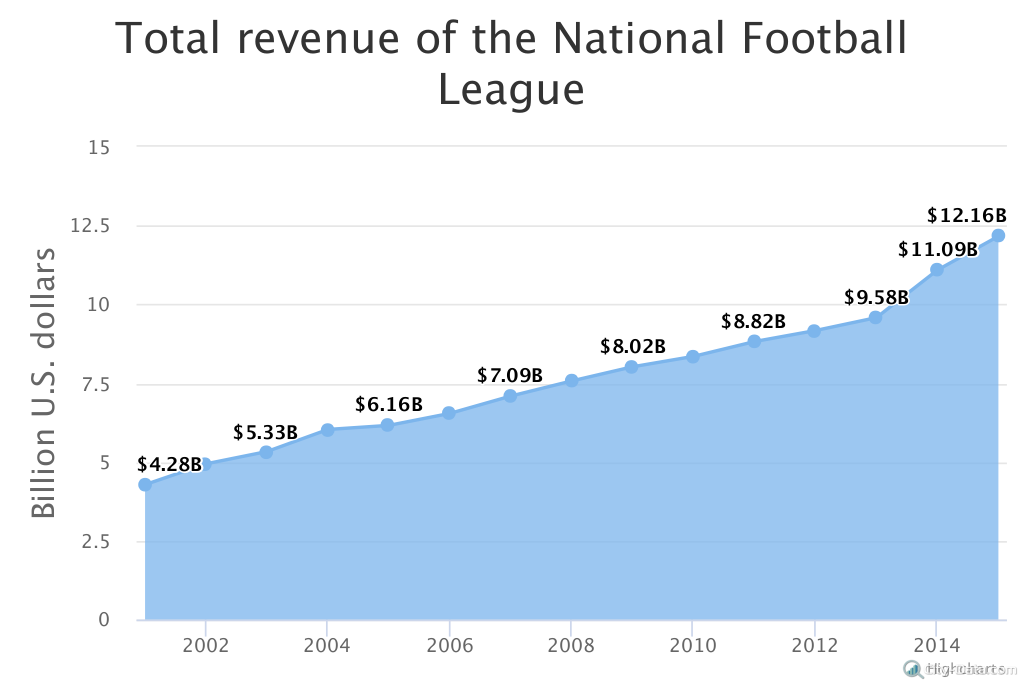Pavel Prikhodko, Ph.D. Machine Learning
Since its formation in 1920, the National Football League (NFL) has gained massive popularity in the United States. The TV viewership of the Super Bowl, the annual game that determines the champion of the NFL, amounted to 114 million people in 2015. In 2014, Super Bowl XLVIII (featuring the Seattle Seahawks against the Denver Broncos) was broadcast to 111 million people.
By the way, the average cost for a 30-second-advertisement was $4 million that year. Super Bowl XLIX in 2015 held the second-highest average cost for a 30-second advertisement at $4.5 million. The game between the Carolina Panthers and the Denver Broncos in February of 2016 (Super Bowl 50) holds the current record at a whopping cost of $5 million for a 30-second advertisement.

Estimates show that consumers in the United States will spend over $15.5 billion on Super Bowl-related purchases in 2016. This number was slightly lower in 2015: $14.31 billion.
The total league revenue of the NFL is truly impressive. In 2014, NFL teams generated a total of over $11 billion. The highest-grossing team in the league was the Dallas Cowboys with over $600 million in revenue. Every year, the total revenue grows. To demonstrate, the teams’ revenues amounted to $8.35 billion in 2010 and $8.82 billion in 2011. In 2012 and 2013, the rates approximated to $9.17 billion and $9.58 billion respectively.

The NFL also boasts the highest average attendance per game among professional sports leagues, drawing more than 68,000 spectators per game in the 2014 season for a total of over 17 million attendees. The most expensive tickets (based on average ticket price) were for New York Giants games, with an average price of $123.40.
About Pavel Prikhodko
Pavel Prikhodko, Ph.D. Machine Learning
Pavel has worked for many years as a researcher and developer on a wide range of applications (varying from mechanics and manufacturing to social data, finance and advertising), building predictive systems and trying to find stories that data can tell.
In his free time, he enjoys being with his family.
Other posts by Pavel Prikhodko:
